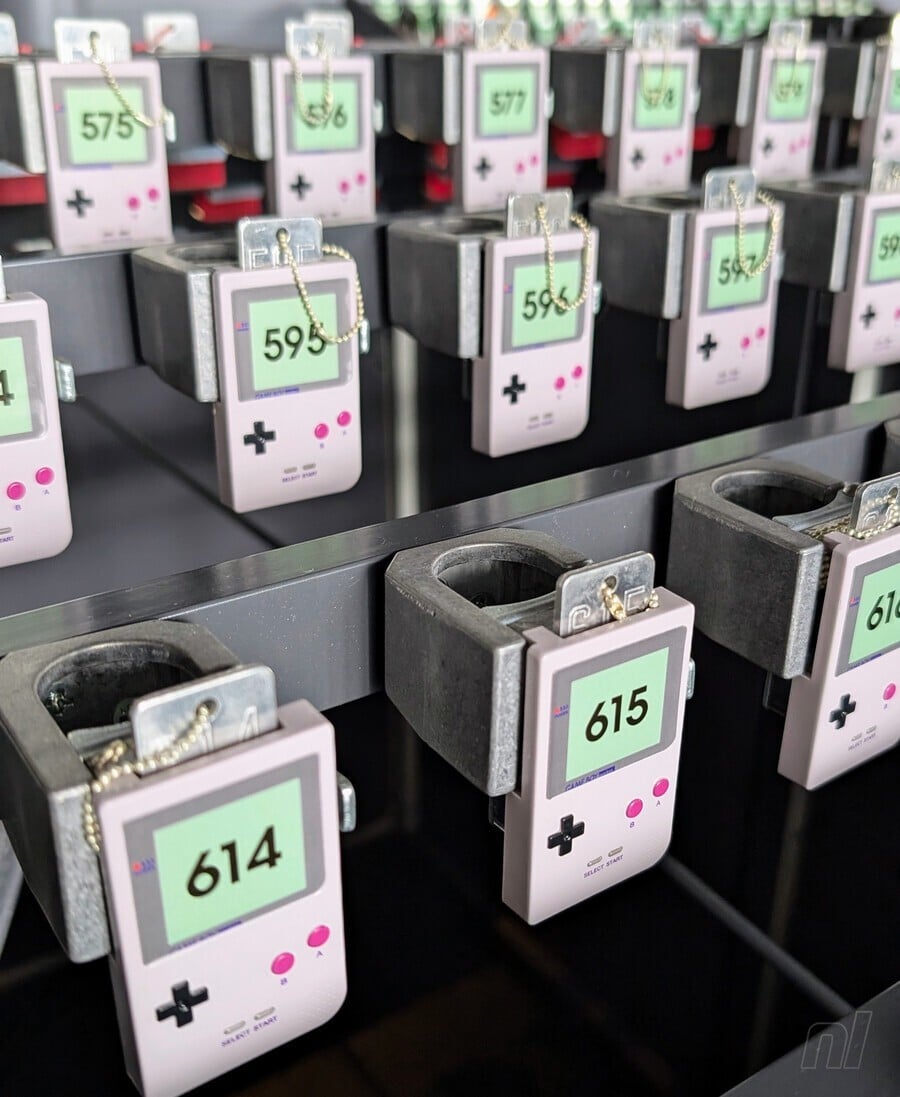
This week, Nintendo opened the doors to a site destined to become a stop-off for many a video game fan visiting Japan: the Nintendo Museum.
This latest venture into the real world promises a peak into the company’s archives and history, and Kyotogamer was there for Nintendo Life with an account of what’s in store if you make the pilgrimage…
Just a short 20-minute train ride on the Kintetsu line south of Kyoto is a sleepy, suburban station named Ogura in the city of Uji.
Nintendo has had a presence in the area since 1969 and, as everyone now knows, decided to convert a factory no longer in use into the first-ever Nintendo Museum.
Ogura is now in the international limelight thanks to Nintendo and its creation of this brand-new, multifaceted tourist attraction. On October 3rd, I was fortunate enough to visit.
Arrival at the gates
After exiting the station, the museum is a brief four-minute walk through a few narrow streets. As you will have no doubt seen, the museum building itself is very subdued in design, covered with rectangular and square tiles coloured in various shades of grey.
Once on the museum grounds, you will need to run a gauntlet of sorts involving waiting in multiple queues, a check-in procedure with your ticket reservation QR code, and lastly, an airport-like security check involving scanners for your luggage and your person.
Unlike at an airport, however, the staff here are incredibly welcoming and willing to help you should any problems arise. In my case, the QR code for entry would not load from the website, causing my heart to momentarily beat louder than a pair of Jungle Beat bongos.
After multiple attempts to load the QR code, it finally appeared and I was able to gain entry – and simultaneously lower my blood pressure tenfold. On completion of that minor ordeal, the security agent handed me my IC chip identification card.
Stage 2
Beyond security and finally free to roam the surroundings, there are photo opportunities aplenty to seek out. Multiple Mario green pipes have been placed throughout the grounds and staff members are omnipresent to help with your memory-making moments.
Also, while outside, keep your eyes peeled for the little easter eggs Nintendo has placed around the grounds, including Game Boy cartridge coin lockers, 8-bit Mario characters tiled into the ground, a Pikmin on a rooftop, a Kirby vending machine, and the Pikachu Game Boy manhole cover. Whether it’s raining or not, the umbrella stand space is also definitely worth investigating since all of the locking umbrella holders are decorated with grey, yellow, red, and green Game Boys.
The museum building consists of two floors and staff direct you to a checkpoint that leads to the exhibition floor. There are numerous monitors reminding you to obey the ‘No Photography’ rule on the exhibition floor.
Also in this entry area is an information desk, noteworthy as it is the place you must go to book either of the two optional workshops: make your own Hanafuda cards or learn how to play the game. An additional fee and reservation are necessary.
World of Nintendo Prototypes
After getting off the escalator on the exhibition floor, you are greeted with a 360-degree view of Nintendo gaming goodness; displays for every console organised chronologically showing every single (Nintendo) game, console variant, and accessory for that particular system. Similar to playing Breath of the Wild for the first time, it can be a bit overwhelming deciding where to begin the adventure.
An area of extreme interest for any Nintendo fan to seek out is the archive corner. On a table within a glass-encased room is a selection of actual Nintendo prototypes used in product development over the years.

Here you can feast your eyes on some of unique items that cannot be seen anywhere else, period. A ‘Nintendo Dolphin’ branded GameCube, an Ultra 64, a red buttoned Super Famicom controller, and some other fascinating rarities are sure to pique your interest.
There were also numerous controller variants, including the infamous Wii U control pad with the Wii remotes attached to the side. Ever imagined what a DS would look like if the default orientation was to open it horizontally like a book? You can see a prototype like that, as well as many other mesmerizing pieces. Regrettably, as mentioned previously, photography is strictly prohibited on the exhibition floor.
One complaint is that there is very limited background information explaining the specific items, in Japanese or English. Each console area does have some limited written information, like how Nintendo innovated the console from the previous generation and attempted to push the boundaries of the gaming experience. As Nintendo lifers, many of us know the provenance of these items already, but especially with the older toys and card games that predate Nintendo’s switch to video game entertainment, I wished there were more written details or anecdotal information.
Insert Tap coins to play
Descending to the first floor you are greeted with a more theme-park, carnivalesque atmosphere. This area is where all interactive exhibits are, so dig out that IC card.
The card is charged with ten coins that you can use to enjoy eight different experiences. However, each activity has a certain cost from one to four coins, so deciding what do to before jumping into any of the games is highly advisable.
Travelling alone, I opted not to try either the giant-sized controllers or the Love Tester SP since they require a Player Two. With my coins, I decided to spend four on the Zap & Scope SP shooting gallery. Even though it is the exhibit with the highest cost, I feel that it was a blast (some pun intended).
Another two games that I highly recommend are the Ultra Hand SP and Ultra Machine SP where Nintendo pays tribute to its toy-making past. If you have any leftover coins, you can challenge the Shigureden SP poem matching challenge, the shadow-controlled Game & Watch activity, or the Nintendo Classic zone, which is basically where you play retro Nintendo games for six minutes.
Exit Through the “Bonus Stage”
The Nintendo shop is one of the highlights of the museum and it’s absolutely chock-full of exclusive items for you burn through your actual coins with. Unlike the Nintendo Stores in Japan, which focus on the various Nintendo IP-related merch, the museum focuses more on the console side of things.
Every single Nintendo console ever produced has its own merch section. From Family Computer and Nintendo Entertainment System to 3DS and Nintendo Switch, there is a set of items for sale. Each section has the same ‘set’, including a t-shirt, coffee mug, pencil, sticker set with a box that resembles the actual hardware’s box, notepads, and pin sets.
Some of these items cannot be found anywhere else, at least not officially licensed. Need a Virtual Boy tee or a Famicom Disk System “Diskun” pin set? The Nintendo Museum’s got you covered!
The hot item from Day One has been the oversized plush controllers. For 11,000 yen (~$75 USD / £57) you can purchase a novelty-sized Famicom, Super Famicom, or Wii Remote cushion, and the N64 pad plushie weighs in at 13,200 yen (~$90 USD / £68). These items were so popular on the opening day that on Day Two the shop had signs in place restricting the purchase of jumbo plush controllers to one per person. It hadn’t taken long for online resellers to spoil the fun.

















